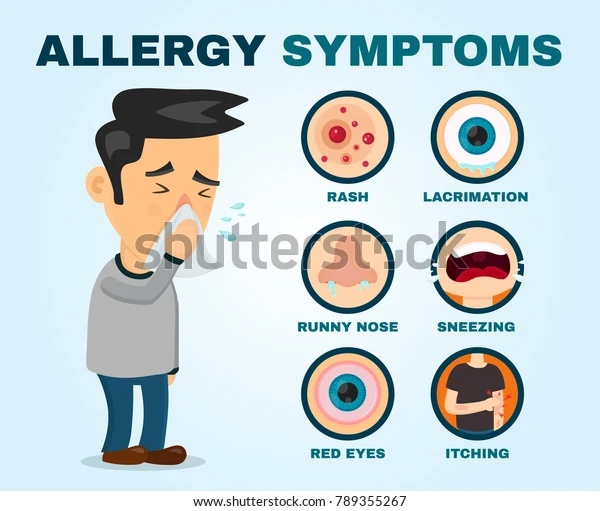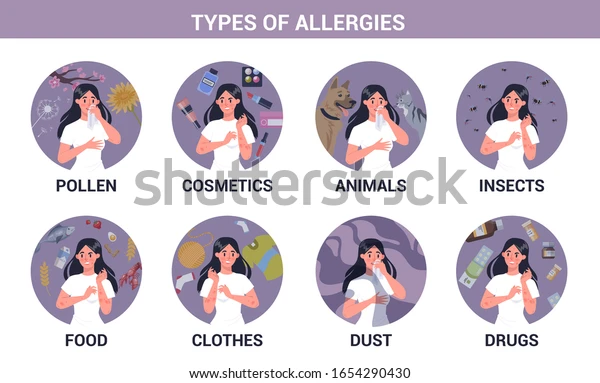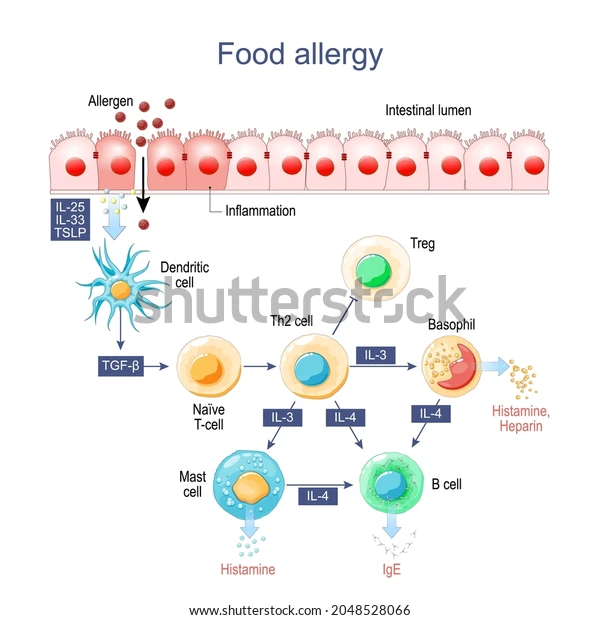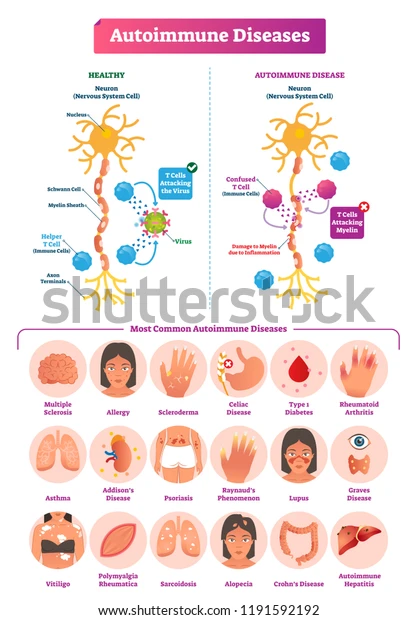JEE Main Important Physics formulas
ApplyAs per latest 2024 syllabus. Physics formulas, equations, & laws of class 11 & 12th chapters
The immune system is involved in autoimmune diseases such as allergies. Allergies are responses that the immune system has to foreign chemicals in the environment. An immune response against the healthier body cells and tissues is known as an autoimmune disease.
Allergies, commonly referred to as allergic disorders, refer to a variety of illnesses brought on by the immune system's hypersensitivity to normally benign environmental chemicals.Anaphylaxis, allergic asthma, atopic dermatitis, hay fever, and food allergies are some of these conditions.Red eyes, an itching rashes, sneeze, cough, a nasal congestion, shortness of breath, and swelling are just a few symptoms that could be present. Food intolerance and food poisoning are two distinct medical diseases
Dust and pollen are two examples of common airborne allergies. In these circumstances, symptoms develop in the eye, nose, and lungs as well as other air-contact sites. For example, allergic rhinitis, or hay fever, causes eye and nasal irritation as well as sneezing, itching, and redness. Respiratory tract allergens can also cause the lungs to produce more mucus, which can cause breathlessness, coughing, and wheezing.

Aside from these environmental allergens, food, insect bites, and reactions to drugs like ibuprofen and antibiotics like penicillin can all cause allergic reactions. Abdominal discomfort, bloating, vomiting, diarrhea, itchy skin, and hives are examples of food allergy symptoms. Rarely do food allergies result in rhinitis or asthmatic responses. Anaphylaxis, also known as a systemic allergic reaction, can be brought on by food, drugs, antibiotics, and insect stings. It can impact the digestive, respiratory, and circulatory systems among other organ systems. Anaphylaxis may cause skin rashes, bronchoconstriction, edema, low blood pressure, unconsciousness, and even death, depending on its severity. A delayed or abrupt onset is both possible for this kind of reaction.

Aside from these environmental allergens, food, insect bites, and reactions to drugs like ibuprofen and antibiotics like penicillin can all cause allergic reactions. Abdominal discomfort, bloating, vomiting, diarrhoea, itchy skin, and hives are examples of food allergy symptoms. Rarely do food allergies result in rhinitis or asthmatic responses.
Anaphylaxis, also known as a systemic allergic reaction, can be brought on by food, drugs, antibiotics, and insect stings. It can impact the digestive, respiratory, and circulatory systems among other organ systems. Anaphylaxis may cause skin rashes, bronchoconstriction, edema, low blood pressure, unconsciousness, and even death, depending on its severity. A delayed or abrupt onset is both possible for this kind of reaction. Due to the nature of anaphylaxis, the reaction may appear to.
A sensitivity and allergy reaction to house dust mite droppings is characterised as a dust mite allergy, often referred to as a house dust allergy. The allergy is widespread and can result in allergic symptoms including eczema, asthma, or itching. It is a parasitosis that has manifested itself. Strong digestive enzymes found in the mite's gut, particularly peptidase 1, are known to cause allergic reactions like wheezing and remain in their excrement. Allergies may also be influenced by the exoskeleton of the mite. House dust mites are not parasitic, apart from lice lice or skin follicles mites, and they do not burrow underneath the skin.

Many different foods can cause allergic reactions, but cow's milk, soy, eggs, wheat, peanuts, tree nuts, fish, and shellfish account for 90% of all food allergies. It is possible to classify as "rare" any additional food allergies which affect less than 1 person in every 10,000. There seems to be no difference in danger while using hydrolyzed milk baby formula as opposed to regular milk baby formula. C
Latex is an allergic reaction caused due to proteins sted in natural rubber latex.
IgE-mediated cutaneous, respiratory, and systemic reactions can be brought on by latex. Less than one percent of the general population is thought to be allergic to latex. In a hospital study, 1 in 800 surgical patients (0.125%) reported having a latex sensitivity, however the rate among healthcare professionals is greater, at 7–10%. This greater amount, according to researchers, is a result of healthcare professionals' exposure to places like operating rooms, intensive care units, and dentistry offices that have high levels of airborne latex allergens. Healthcare personnel who frequently breathe in allergenic proteins may become sensitized in these latex-rich surroundings.
Sensitivity to bananas and latex may respond together. Additionally, people who are allergic to latex may also be sensitive to avocado, kiwifruit, and chestnut. These persons frequently experience localized urticaria and perioral irritation. Systemic reactions from these food allergies have only happened on rare occasions. Since several other plant proteins share structural similarities with latex proteins, it is thought that latex reacts with foods like banana, avocado, kiwifruit, and chestnut.
Usually, stinging insects (such as wasps, bees, hornets, and ants) or biting insects are the ones that cause allergic reactions (mosquitoes, ticks). Biting insects typically inject anticoagulants into their prey, whereas stinging insects inject venom.
The likelihood of identical twins developing the same allergic disorder is approximately 70%; the likelihood of non-identical twins developing the same allergy is approximately 40%. Allergic diseases are highly inherited. Children of allergic parents are more likely to be allergic than children of non-allergic parents, and those children's allergies are more likely to be severe. However, some allergies do not always run in families; for example, children of parents who are allergic to peanuts may also be sensitive to ragweed. The probability of having allergies is inherited and associated with immune system dysregulation, although the allergen itself is not.
Allergy symptoms can worsen under chronic stress. The inhibition of Interleukin 12 by the autonomic and the hypothalamic-pituitary-adrenal axis, as well as a T responder 2 (TH2)-predominant response, have been implicated in this. Symptoms could be improved with stress management in people who are extremely vulnerable.
When the previously mentioned auto-reactive T cells and B lymphocytes (autoantibodies) destroy the organ or tissue holding the target autoantigen, pathological and/or functional autoimmune disorders result (s). As a result, rather than acting as a side effect, auto-reactive cells are indeed the actual cause for autoimmune illnesses.

Over a hundred autoimmune disorders are recognised. Lupus, rheumatoid arthritis, Crohn's disease, and ulcerative colitis are examples of common ones.
Numerous different tissue types and almost every organ in our body are susceptible to autoimmune disorders. Numerous symptoms, including discomfort, exhaustion, rashes, nausea, migraines, dizziness, and more, may be brought on by them.
An autoimmune disease arises when the body's immune system accidentally targets and destroys healthy body tissue. There are more than 80 different types of autoimmune disorders.
The immune system of the body's blood cells aids in defense against dangerous chemicals. The list of examples includes blood and tissue from outside of the body, bacteria, viruses, poisons, and cancer cells. Antigens can be found in these substances. These toxic compounds can be eliminated by the immune system thanks to the antibodies it creates in response to these antigens.
Your immune system fails to discriminate between healthy tissue and potentially harmful antigens when you have an autoimmune illness. Because of this, the body starts a reaction that kills healthy tissues.
Autoimmune illnesses have no known specific aetiology (set of causes). According to one notion, certain medications or microbes (such bacteria or viruses) may cause alterations that cause the immune system to become confused. People with genes which make them more susceptible to autoimmune illnesses may experience this more frequently.
An autoimmune condition may cause:
the amputation of bodily parts
unnatural organ growth
Modifications to organ function
One or even more organ or tissue types may be impacted by an autoimmune disease. Affected regions by autoimmune diseases include:
vascular system
articular tissues
Joints, Thyroid or pancreatic endocrine glands
Muscles
RBCs Red Blood cells
Skin
A person may experience multiple autoimmune diseases simultaneously. Typical autoimmune conditions include:
Addison's illness
Gluten sensitivity sprue (gluten-sensitive enteropathy)
Dermatomyositis
Graves illness
autoimmune thyroiditis
a number of sclerosis
Chronic myasthenia
Chronic anemia
inflammatory arthritis
arthritis rheumatoid
Sjögren disease
Lupus erythematosus systemic
Following is a list of symptoms organized by disease type:
Diseases of the muscles and joints: | Digestive system disorders: | Skin disorders: |
|
|
|
Nervous system illnesses: | Other illnesses |
|
|
These days, autoimmunity is on my mind a lot. This term, I'm instructing two classes on autoimmune disease.
But I'm also considering autoimmune because we know that the infection can raise the chance of autoimmunity in those who are genetically predisposed. There is a very good chance that autoimmunity will rise in the future given how many infections the world has seen this year.
Stages of autoimmune disease development.
The initial phase is conspicuously silent.
A rogue T cell / B cell slips past bone marrow tolerance and travels to the periphery of the body. Unless they are triggered, these cells are harmful. Infection may then occur in that situation. The body's so-called "danger reaction" is heightened by infections. The bystander effect can cause any rogue autoreactive cells to become active.
Autoreactive T and B cells trigger the autoimmune response when they become active. There may be some exhaustion, mental dullness, and physical aches during this initial stage of autoimmunity. Some individuals, though, report no symptoms at all. This initial stage may persist for months or years.
Mostly in the second stage of the autoimmune illness, B and T cells multiply and assault their own tissue.
They begin to cause tissue damage. B cells can develop auto-antibodies that are specific to an individual. These can be detected via blood tests. Predictive auto-antibodies may appear early in a disease. The illness affects how specific the antibodies are. Autoantibodies in lupus, for instance, are specific for ribonucleoproteins (anti-Sm/RNP), DNA, Smith antigen, and the cell nucleus (anti-nuclear antibodies, ANA), among other things.
Autoantibodies are testable. This can be challenging if the autoimmune disease's symptoms are not well-defined. There are a number of illnesses that could be the cause of generalised weariness and pain. Autoantibodies, however, can confirm sickness and pinpoint which autoimmune disease originated if indeed the symptoms are specific.
These autoantibodies can occasionally cause disease pathology. They can create immunological complexes that become lodged in certain tissues, result in cell death, nor block receptors that seem to be essential for proper operation. The innate T cells that are stimulated by the antibodies can lead to disease pathology.
The final level of autoimmune illness occurs when symptoms really become severe that people seek medical attention.
Unfortunately, it's more challenging to cure autoimmunity at this third stage. Often, suppressing the immune system is the only effective treatment.
Autoimmune diseases are genetically predisposed to develop. That implies that many illnesses run in families.
An autoantibody test may be able to detect the disease at an earlier stage if you have a family history of the disease, have recently experienced a serious infection, and are exhibiting symptoms.
Then, lifestyle changes (such as those related to diet, exercise, and mind-body therapies) may aid in reducing the rate of illness development. The best course of action is still to avoid severe infections in the interim.
Immunosuppressive, anti-inflammatory, nor palliative therapies have traditionally been used to treat autoimmune diseases. In autoimmune illnesses, controlling inflammation is essential. Non-immunological therapies that treat the effects of something like the autoaggressive response include hormone replacement therapy for Hashimoto's thyroiditis and Type 1 diabetes mellitus. Modifying one's diet can lessen the intensity of celiac disease. Treatment with steroids or NSAIDs reduces many diseases' inflammatory symptoms. IVIG is used to treat GBS and CIDP. Certain immunomodulatory treatments have been demonstrated to be effective in the treatment of RA, including TNF antagonists (e.g., etanercept), the B cell depleting drug rituximab, and anti-IL-6 receptor tocilizumab, as well as the costimulation blocker abatacept. Certain of these immunotherapies might come with a higher risk of side effects, like infection susceptibility.
The following are the two's primary points of similarity:
Both symptoms cause a generalised sense of exhaustion and malaise.
Both autoimmune disorders and allergies frequently exhibit itching as a symptom.
Due to the heightened immune response, all allergies and autoimmune illnesses result in some degree of redness or swelling.
Allergies | Autoimmune |
a situation where the immune system responds to an outside substance inappropriately. | A condition known as an autoimmune illness body ’s immune system mistakenly targets the healthier body cells and tissues for attack. |
External triggers including pollens, particular foods, medications, insects, animals, etc. are the main causes of allergies. | The inner trigger to the body's own cells causes autoimmune diseases. |
Examples:Skin allergies, sinus, asthmatic, eye irritation, coughing, or itching nose and eyes | Examples:include inflammatory bowel disease, type 1 diabetes, sclerosis, rheumatoid, etc. |
When immune cells are triggered by non-pathogenic antigens, allergies and autoimmune diseases develop. While being in autoimmunity the immune response assaults cells expressing self-antigens, in the case of allergies the immune system identifies harmless non-self-antigens (for example, proteins in peanuts).
Your immune system's reaction to a chemical leads to allergies. Immune reactions range from a minor cough and runny nose to the potentially fatal condition known as anaphylaxis. A person experiences an allergic reaction when their body produces antigens to a materia
An increase in inflammation occurs throughout the body as a result of allergic rhinitis.. Immune cells start releasing adrenaline, proteolytic enzymes, acyl chemokines, prostaglandins, and cytokines minutes after being exposed to an allergen
A disorder where the body naturally assaults healthy tissues because it perceives them as foreign. Most autoimmune disorders result in inflammation, which can impact various body parts.
The seven autoimmune system are
Addison disease
Celiac disease
Dermatomyosits
Graves disease
Hashimoto thyroiditis
Multiple sclerosis
Myasthenia gravis
Pernicious anemia
Apr 27, 2022 - 12:42 p.m. IST ---STATIC
Apr 27, 2022 - 12:42 p.m. IST ---STATIC
Apr 27, 2022 - 12:42 p.m. IST ---STATIC
Apr 27, 2022 - 12:42 p.m. IST ---STATIC
Apr 27, 2022 - 12:42 p.m. IST ---STATIC
Apr 27, 2022 - 12:42 p.m. IST ---STATIC
Apr 27, 2022 - 12:42 p.m. IST ---STATIC
Apr 27, 2022 - 12:42 p.m. IST ---STATIC
Apr 27, 2022 - 12:42 p.m. IST ---STATIC
Apr 27, 2022 - 12:42 p.m. IST ---STATIC

As per latest 2024 syllabus. Physics formulas, equations, & laws of class 11 & 12th chapters

Register FREE for ALLEN Digital Scholarship Admission Test (ADSAT)

Get up to 90% scholarship on NEET, JEE & Foundation courses

As per latest 2024 syllabus. Chemistry formulas, equations, & laws of class 11 & 12th chapters

Enrol in PACE IIT & Medical, Financial District, Hyd for JEE/NEET preparation

Start your JEE preparation with ALLEN